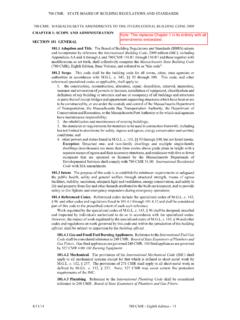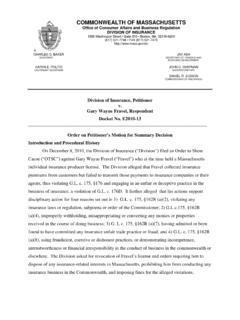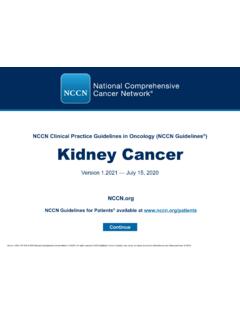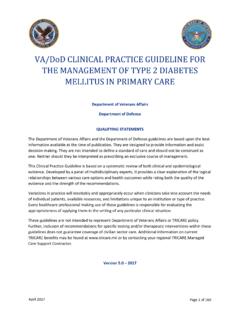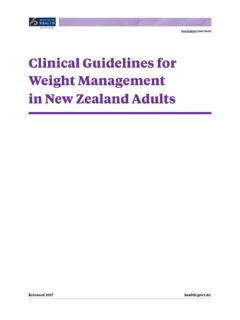Transcription of Guidelines for Medical Necessity Determination ... - …
1 Guidelines for Medical Necessity Determination for Treatment of Varicose Veins of the Lower Extremities This edition of the Guidelines for Medical Necessity Determination ( Guidelines ) identifies the clinical information that MassHealth needs to determine Medical Necessity for the treatment of varicose veins of the lower extremities. These Guidelines are based on generally accepted standards of practice, review of the Medical literature, and federal and state policies and laws applicable to Medicaid programs. Providers should consult MassHealth regulations at 130 CMR (Physician Services) and (Administrative and Billing Regulations) and Subchapter 6 of the Physician Manual for information about coverage, limitations, service conditions, and prior authorization requirements. Providers serving members enrolled in a MassHealth-contracted accountable care partnership plan (ACPP), managed care organization (MCO), integrated care organization (ICO), senior care organization (SCO), or program of all-inclusive care for the elderly (PACE), should refer to the ACPP's, MCO's, ICO's, SCO's or PACE's Medical policies for covered services.
2 MassHealth requires prior authorization for the treatment of varicose veins of the lower extremities, and reviews requests for prior authorization on the basis of Medical Necessity . If MassHealth approves the request, payment is still subject to all general conditions of MassHealth, including member eligibility, other insurance, and program restrictions. 1. Section I. General Information Saphenous Veins The venous system of the lower extremities consists of superficial veins, deep veins and perforator veins (which connect the deep and superficial veins). The main superficial veins of the lower extremities are the great saphenous veins (GSV), the small saphenous vein (SSV) and accessory saphenous veins (ASV). There are unidirectional valves, mostly present in the superficial veins, which prevent the backward flow of blood. Sometimes theses valves become incompetent which can lead to reflux or backward flow.
3 This backward flow in the venous system can lead to the development of varicose veins, pain or other discomfort (ache, pain, tightness, skin irritation, heaviness, muscle cramps), itching, edema, thrombophlebitis, ulcers, bleeding or changes in the skin of the lower extremities. Varicose veins of the lower extremities are defined as dilated subcutaneous veins measuring 3 mm in diameter in an upright position. This spectrum of disease resulting from venous reflux is referred to as chronic venous disease (CVD). Dilated intradermal veins and venules between 1 and 3 mm in diameter, often referred to as spider veins, reticular veins or telangiectasia can also result from venous reflux. The CEAP classification, which stands for clinical manifestations (C), etiology (E), anatomic distribution of disease (A) and underlying pathologic findings (P), is used to describe and classify the extent of the disease which results from venous reflux (see Appendix A for details of CEAP.)
4 Classification). page 1 Guidelines for Medical Necessity Determination for treatment of varicose veins of the lower extremities MNG-VV (02/19). If CVD is suspected as the cause of symptoms in the lower extremities after a comprehensive history and physical is performed, a trial of conservative measures for 3 months, including elevation, analgesics, graded compression stockings and skin or wound care if needed may be successful in treating symptoms, especially healing venous ulcers. If symptoms persist, and reflux of 500. milliseconds (ms) in the saphenous veins is documented by venous duplex ultrasound (performed by a qualified physician or technologist supervised by a qualified physician), interventional treatment is recommended for CVD with CEAP classification of C2 or higher. C2 corresponds to a clinical classification of varicose veins ( 3 mm). When venous ulcers are present, interventional treatment along with continuation of compression therapy is recommended to decrease recurrence.
5 Interventional treatments include ligation and stripping (open venous surgery), endovenous laser ablation of the saphenous vein (ELAS), endovenous radiofrequency ablation (RFA) and foam sclerotherapy (endovenous chemical ablation). ELAS and RFA are also referred to as endovenous thermal ablation (EVTA), endovenous catheter ablations (EVCA) or endovenous laser treatment (EVLT). When ulcers are present, compression is recommended as adjuvant treatment to interventional treatments to prevent ulcer recurrence. When open surgery is performed on the great saphenous vein it should be high ligation and invagination stripping of the saphenous vein to the level of the knee. When open surgery of the small saphenous vein is performed, it should be high ligation at the knee crease, with selective invagination stripping of the incompetent portion. EVTA procedures are generally performed on an outpatient basis with local anesthetic and require no sedation.
6 The procedure is done under ultrasonographic guidance which is inclusive of the procedure. A catheter is placed percutaneously into the saphenous vein which delivers thermal energy (laser or radiofrequency) which causes irreversible fibrosis and occlusion of the vein. EVTA procedures are associated with reduced pain, morbidity and recovery time over open surgery. Foam sclerotherapy of the saphenous veins involves injection of a liquid sclerosant along with gas into the veins using ultrasound guidance which is inclusive of the procedure. The walls of the vein are destroyed in this process causing sclerosis of the veins. Foam sclerotherapy is generally performed on an outpatient basis with local anesthetic and require no sedation. The ambulatory conservative hemodynamic correction of venous insufficiency (CHIVA) method is a minimally invasive technique to treat CVD. clinical data from large quality prospective clinical trials fully evaluating this technique in comparison to standardized techniques is still lacking.
7 Ambulatory selective varicose vein ablation under local anesthesia (ASVAL) treatment for saphenous reflux has not been evaluated in large quality prospective clinical trials fully evaluating this technique in comparison to standardized techniques. Liquid sclerotherapy does poorly for the treatment of saphenous vein incompetence. clinical data evaluating long term safety and efficacy of treatment of any vein with cyanoacrylate adhesive, cryosurgery and mechanochemical data are lacking. page 2 Guidelines for Medical Necessity Determination for treatment of varicose veins of the lower extremities Perforator Veins There is an established association between incompetent perforating veins and venous ulcers. Treatment of incompetent perforating veins can be done using subfascial endoscopic perforator vein surgery (SEPS) under general or epidural anesthesia, EVTA as described above or ultrasound guided foam sclerotherapy.
8 EVTA and sclerotherapy techniques used in the treatment of incompetent perforators can be referred to as percutaneous ablation of perforators (PAPS). Sclerotherapy of the perforator vein can be complicated by inadvertent embolization of the artery resulting in necrosis. This is preventable using proper technique. Patients with superficial and perforator vein incompetence (PVI) with a normal deep venous system can experience improvement in symptoms and perforator incompetence with treatment of the superficial system including the saphenous and tributary veins. If symptoms persist, treatment of incompetent perforator vein is recommended when there is reflux of 500 milliseconds (ms). documented by venous duplex ultrasound (performed by a qualified physician or technologist supervised by a qualified physician) in the perforator vein with a diameter of mm at the level of previous or active venous ulceration (CEAP class C5-C6.)
9 There is a higher rate of treatment failure or ulcer recurrence in patients with deep venous occlusive disease (post-thrombotic syndrome). Tributory Veins Almost all cases of symptomatic varicosities are associated with reflux in the saphenous system. These symptomatic varicose tributaries of CEAP class C2 or higher can be treated at the same time or following treatment of the saphenous system. Symptomatic tributary veins can be treated using ambulatory phlebectomy techniques, also referred to as stab or hook or miniphlebectomy, involves avulsion of varicose veins through small stab wounds. Transilluminated powered phlebectomy (TIPP) is an alternative technique using a powered unit with an oscillating resector hand piece which allows decreased number of incisions and faster removal of a large amount of varicose veins. Symptomatic tributary veins can also be treated using sclerotherapy.
10 Telangiectasias Dilated intradermal or subdermal veins and venules less than 3 mm in diameter often referred to as spider veins, reticular veins or telangiectasia can also result from venous reflux. However these veins do not cause symptoms and their treatment with liquid or foam sclerotherapy is regarded as cosmetic. MassHealth considers approval for coverage of treatment of varicose veins of the lower extremities on an individual, case-by-case basis, in accordance with 130 CMR and page 3 Guidelines for Medical Necessity Determination for treatment of varicose veins of the lower extremities 2. Section II. clinical Guidelines A. clinical Coverage MassHealth bases its Determination of Medical Necessity for the treatment of varicose veins on clinical data including, but not limited to, indicators that would affect the relative risks and benefits of the procedure, including post-operative recovery.




